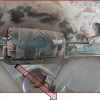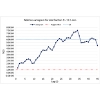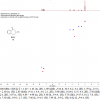Clemens Anklin gives a short history of the commercial and technical development of NMR. From the first measurement of nuclear spin in 1937 by Rabi and his 1943 Nobel Prize to recent developments in small NMR spectrometers and instrument company changes.
Articles and Columns
Pages
FAIR, which stands for Findable, Accessible, Interoperable, Reusable, is an essential framework for the future of analytical data. Tony has taken the opportunity of a recent conference in Amsterdam to update readers on FAIR and how it affects spectroscopic data.
The last sampling columns have focused on the advantages the Theory of Sampling (TOS) can bring to companies, producers and manufacturers significantly reducing costs due to inferior sampling, and maximising efficiency and logistics. Here instead we take a look at sampling from the point of view of buyers, consumers and from a broader societal perspective, exploring the economic benefits and other advantages (e.g. transparency) that can be obtained through proper sampling. We address the point of view of the ultimate users and beneficiaries of TOS, on the market place or elsewhere. We are going to explore the other side of the coin, the one linked to the ethical and moral obligations that pertain to decision-makers of responsible public and governmental bodies, which indeed should apply equally also to producers and manufacturing companies.
This column explores the initial results extracted from the survey in the last issue into the training the next generation of colleagues currently receives in analytical chemistry.
In this work we demonstrate the suitability of confocal Raman microscopy for the characterisation of carious dental tissues. Samples of enamel and dentine, presenting carious lesions in different stages of progression, were evaluated by comparing the depolarisation ratio of the PO43– symmetric stretching band at 959 cm–1 in the different tissues. Both line and area scans were performed to gauge these variations. Moreover, the obtained results were compared with the tissues’ behaviour when interacting with ultraviolet radiation, namely the induced fluorescence in some tissues. The depolarisation ratio has proven to be a valuable tool in recognition of demineralisation of both enamel and dentine due to caries. The analyses of the collagen bands in the dentine sample turned out to be more difficult to evaluate due to high fluorescence in the carious region.
Pentti Minkkinen and Kim Esbensen present case histories and examples all focusing on the potential for economic loss or gain—by following, or more importantly, by not following TOS.
John Hammond updates us on news from the latest ISO/REMCO meeting and implementation of the new 17000 series standards.
Do you educate students who may go on to work in industry, or are you involved in assimilating students into your team? If so, you will really want to read this issue’s Tony Davies Column. Tony and co-authors, Jennipher Dania and Joachim Zahradnik, are undertaking two surveys to explore this area: one for Academics and one for Industrialists. Please do spend the very short time needed to complete one (or both) of these surveys.
Significant research is underway globally into both improving corrosion protection as well as removing chemicals of concern from existing corrosion protection coatings. This is because the cost of corrosion in developed economies has been consistently shown to lie in the range 2–4% of Gross National Product.
Nanomaterials find widespread applications in many fields of science and nanotechnology, especially as catalysts in the chemical, bio-nanotechnology, nano-electronics and pharmaceutical industries. Understanding the physical and chemical properties of nanoscale materials is important, not only because of the fascinating nature of the subject, but also due to their potential applicability in almost every branch of science and technology. Nanostructured materials offer interesting properties, because at the atomic or molecular scale, the physical properties of a material become size dependent due to the quantum confinement and surface states effects.
In this article the question of the certification of calibration samples for the characterisation of advanced thin film materials is addressed within the framework of reliable process control or quality management purposes. Reference measurement techniques can be used in order to address the gap in appropriate certified reference materials (CRMs) for thin film analyses. They allow for qualifying out-of-production samples originating from an operating production line as calibration samples. As a template for this procedure, CIGS [Cu(In,Ga)Se2] layers, that are absorber layers for high efficiency thin-film solar cells, have been used for establishing and validating reference-free X-ray fluorescence (XRF) analysis and Auger-electron spectroscopy (AES) as reference measurement techniques.
Sampling takes place every day in everybody’s daily life. Consciously or unconsciously, we all take decisions regarding how to select and collect the things we need, be those vegetables or coffee in the supermarket, or material for academic research projects—with everything in between. Those who have been curious enough to reflect on everyday decision-making processes, discovered immediately that sampling decisions often make all the difference. This is why an incipient theory started to be elaborated. One individual, more brilliant than others, made a giant step forward in the evolutionary thinking on sampling and developed what became the Theory of Sampling (TOS); his name was Pierre Gy. Here, we discuss cases both pro et contra TOS.
Karin Engström, LKAB mining, Kiruna, Sweden, continues to present illuminative cases from process industry. Here she reveals more from her ongoing PhD project showing application of variographic characterisation for on-line continuous control of process sampling systems, including the one that was validated according to current ISO standards guidelines in the previous column (monitoring a particular iron ore pellet stream). Together, the cases presented constitute a broad didactic showcase of the power of variographic analysis and problem-specific interpretations.
Chris Burgess and John Hammond are back with an “Update on the modernisation of the spectroscopic General Chapters in the United States Pharmacopeia (USP)”. They review progress over the last three years and particularly on the changes intended in the USP Review Cycle 2015 to 2020.
Tony Davies continues his quest to find out what you all need to work more efficiently. You will remember that in the last issue, Tony introduced his survey to discover what developments were needed in spectroscopy by readers. Some of the initial responses are explored, and Tony finds that he has opened a “can of worms”.
It is your turn to contribute: to the potential development of new spectroscopic instrumentation! Tony argues that many spectroscopic fields have seen little real development: and there are many reasons for that. Now, you have your chance to let us and, more importantly, the instrument vendors know what innovations (hardware and software) you would like to see in order to help you in your work. There is a short (three-question) survey ; please use this opportunity to help influence the future of the instrumentation you will be using.
Different spectroscopic techniques have been combined to provide additional and complementary information for decades. Increasingly, this is being expanded beyond just two techniques and may include spatial/imaging information as well. All of which bring their own challenges. In “Multimodal imaging of cells and tissues: all photons are welcome”, David Perez-Guaita, Kamila Kochana Anja Rüther, Phillip Heraud, Guillermo Quintas and Bayden Wood report an example of these new approaches. They look at the use of infrared, Raman and X-ray fluorescence spectroscopies to obtain combined imaging data of whole algal cells and discuss how to overcome the challenges.
This feature forms an intermezzo in the current segment of process sampling columns. We have asked Karin Engström, Luossavaara Kiirunavaara AB (LKAB), Kiruna, Sweden to outline how industrial validation of a process sampling system takes place following ISO standards guidelines.
John Hammond updates us on recent developments with the ISO 17xxx series of standards. John continues with news of standards particularly relevant to readers.
Tony Davies and a number of others consider collecting supplementary spectroscopic data. Like Eurospec, the plan is to use such supplementary data not only to enhance the published paper, but also to aid thorough peer-review by allowing reviewers access to the full data rather than, as Tony puts it, “low-resolution images of data”. I’m sure you will be interested in a look at the future through this column.

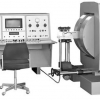



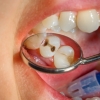

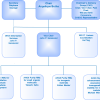

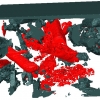
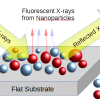
![Illustration of a thin film solar cell based on a CIGS [Cu(In,Ga)Se2] absorber layer](https://test2.spectroscopyeurope.com/sites/default/files/styles/thumbnail/public/articles/Thin_Film_30-1_F1w.jpg?itok=JQfZKNn5)
